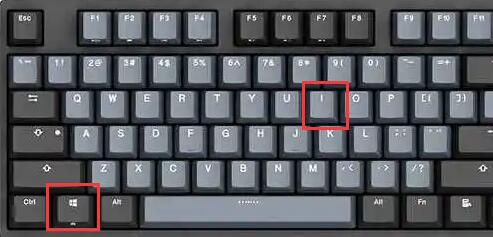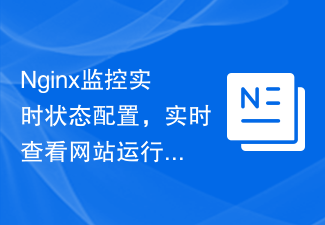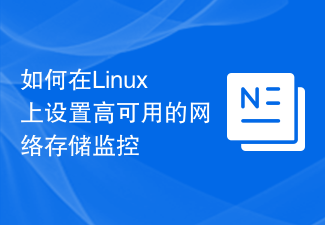 web3.0
web3.0 Bitcoin ETF has a single-day net outflow. Why is it so important to monitor ETF water pipes?
Bitcoin ETF has a single-day net outflow. Why is it so important to monitor ETF water pipes?How to check the net inflow/outflow data of Bitcoin $BTC spot ETF?
【Don’t Ask for Help Series】
Farside data: https://farside.co.uk/?p=997
The Block Data: https://theblock.co/data/crypto-markets/bitcoin-etf/spot-bitcoin-etf-flows
Q: Why should you care about knowing bits What are the inflows and outflows of currency ETFs?
Bitcoin spot ETFs play a key role in U.S. stock funds and are the main channel for funds to enter the cryptocurrency market. As long as this channel remains stable, Bitcoin’s performance won’t be too bad.
Q: Really? How much money does the ETF pipeline bring?
BlackRock and Fidelity have been leaders in the ETF market. Together, they hold more than 500,000 bitcoins, which has brought more than $30 billion in capital inflows to the entire industry. These funds are real funds, not virtual currencies. It is worth mentioning that the inflow of these funds has had a profound impact on the Bitcoin market and brought an important impetus to the development of the digital asset market.
Data source: https://coinglass.com/bitcoin-etf
Q: Why emphasize “net” inflow?
A: Because Grayscale $GBTC investors are continuing to redeem BTC, that is, "outflow". Including GBTC outflows, net inflows into the 11 ETFs still exceeded $12 billion.
Q: Have many ETFs begun to flow out? A: Basically only grayscale is constantly flowing out.
Some data:
Before the ETF was approved, Grayscale’s “small ETF” had accumulated 600,000 Bitcoins;
After more than two months of ETF approval, Grayscale still had Place 380,000 Bitcoins.
Q: Grayscale is the main contributor to the ETF’s approval. Why does it keep flowing out?
A: Two reasons.
(1) Migration requirements: Grayscale’s management fee is very expensive, and the annual management fee is 1.5%. Other institutions generally charge 0.2%-0.25%, and some even waive the fee.

(2) Exit demand: Grayscale was established very early. $GBTC investors opened an average position of about $27.8 (from: webull). The current price is $57.4, which has doubled.

$Big investors in GBTC include the bankrupt 3AC and FTX, which have strong motivation to ship.
As for BlackRock’s $iBTC, the average cost is probably around $30, but now it’s only $36, so there is relatively little incentive to exit.
Q: Why doesn’t Grayscale lower its fees?
Grayscale: There are plans to gradually reduce fees in the next few months.
Grayscale CEO’s defense: We have the historical performance to prove that we dare to charge this fee. Other companies have no historical performance, so they naturally have to reduce fees and promote promotions.
PS1: This sophistry is a bit humorous. Putting aside the fact that GBTC and iBTC rose and fell at the same time, Bitcoin’s K-line is the common “historical performance” of all ETFs.
PS2: This kind of vague rhetoric ≈ no plan, just take it step by step.
PS3: Mainly economic accounts. 1.5% to 0.25% is too much. Even if Grayscale’s share drops to 1/6, which means another 300,000 BTC will flow out, it will still make more money without reducing fees.
PS4: It’s a pity that investors are lazy. If it is already in the ETF, it is too lazy to take it out; if it is already taken out, it is too lazy to put it back. Therefore, many of the huge GBTC redemptions "accidentally" turned into real selling pressure.
Q: How big is the selling pressure on GBTC?
A: On March 18, GBTC withdrawals broke the record, with 640 million US dollars withdrawn in one day, resulting in one of the few net outflow days in the history of BTC ETF, with the net outflow amount reaching 150 million US dollars.

This may also be an important reason for yesterday's sharp drop.
PS: Make a small comparison.
Now $BTC is mined 6.25 * 144 = 900 BTC every day; it will become 450 BTC after the halving in one month. In other words, the halving reduced the daily selling pressure by US$28 million.
Q: How many BTC does Grayscale have?
A: 380,000 pieces, disclosed on the official website. https://etfs.grayscale.com/gbtc
Q: So how was last night (March 19)?
A: Grayscale once again redeemed 440 million US dollars in BTC, while BlackRock was slightly weak, with only 75 million US dollars flowing in, resulting in an outflow of 300 million US dollars, which was larger than yesterday.
Finally, pay attention to emotions and data. Treasures are often hidden in the moment of change.
I wish you all a smooth landing and a finger on the pulse.
The above is the detailed content of Bitcoin ETF has a single-day net outflow. Why is it so important to monitor ETF water pipes?. For more information, please follow other related articles on the PHP Chinese website!
 如何在FastAPI中实现请求日志记录和监控Jul 30, 2023 am 08:29 AM
如何在FastAPI中实现请求日志记录和监控Jul 30, 2023 am 08:29 AM如何在FastAPI中实现请求日志记录和监控引言:FastAPI是一个基于Python3.7+的高性能Web框架,它提供了许多强大的功能和特性,包括自动化的请求和响应模型验证、安全性、性能优化等。在实际开发中,我们经常需要在应用程序中记录请求日志以便进行排错和监控分析。本文将介绍如何在FastAPI中实现请求日志记录和监控,并提供相应的代码示例。一、安装依
 Linux下的实时日志监控与分析Jul 29, 2023 am 08:06 AM
Linux下的实时日志监控与分析Jul 29, 2023 am 08:06 AMLinux下的实时日志监控与分析在日常的系统管理和故障排查中,日志是一个非常重要的数据来源。通过对系统日志的实时监控和分析,我们可以及时发现异常情况并进行相应的处理。本文将介绍Linux下如何进行实时日志监控和分析,并提供相应的代码示例。一、实时日志监控在Linux下,最常用的日志系统是rsyslog。通过配置rsyslog,我们可以实现将不同应用程序的日志
 win10监控摄像头打开照片的方法Jul 10, 2023 pm 09:41 PM
win10监控摄像头打开照片的方法Jul 10, 2023 pm 09:41 PM如果我们手头没有手机,只有电脑,但我们必须拍照,我们可以使用电脑内置的监控摄像头拍照,那么如何打开win10监控摄像头,事实上,我们只需要下载一个相机应用程序。打开win10监控摄像头的具体方法。win10监控摄像头打开照片的方法:1.首先,盘快捷键Win+i打开设置。2.打开后,进入个人隐私设置。3.然后在相机手机权限下打开访问限制。4.打开后,您只需打开相机应用软件。(如果没有,可以去微软店下载一个)5.打开后,如果计算机内置监控摄像头或组装了外部监控摄像头,则可以拍照。(因为人们没有安装摄
 基于go-zero实现微服务调用链监控Jun 23, 2023 am 09:53 AM
基于go-zero实现微服务调用链监控Jun 23, 2023 am 09:53 AM随着微服务架构的广泛应用,调用链监控已经成为了保障微服务健康运行的重要手段。而基于go-zero框架实现微服务调用链监控,则是更加高效可靠的实现方式。一、调用链监控的基本概念微服务架构中,一个请求可能经过多个微服务组件的调用,这些调用形成了一条调用链。而一旦某一个环节出现问题,整个服务甚至整个系统都有可能受到影响。因此,调用链监控这个技术,就是通过记录整条调
 如何使用Golang实现Web应用程序监控Jun 24, 2023 am 09:00 AM
如何使用Golang实现Web应用程序监控Jun 24, 2023 am 09:00 AM在当今的互联网时代,Web应用程序的高效稳定运行是非常重要的。然而,应用程序可能会出现故障或崩溃,影响用户体验。为了确保应用程序的正常运行,我们需要对其进行监控。本文将探讨如何使用Golang实现Web应用程序监控。一、Golang的Web应用程序监控工具Golang拥有非常适合Web应用程序监控的工具。其中最流行的就是Prometheus。Promethe
 Nginx监控实时状态配置,实时查看网站运行Jul 04, 2023 pm 05:18 PM
Nginx监控实时状态配置,实时查看网站运行Jul 04, 2023 pm 05:18 PMNginx监控实时状态配置,实时查看网站运行引言:Nginx是一款非常流行的反向代理服务器,其高性能和高并发能力使得它成为了许多网站的首选。为了保证网站的稳定运行,我们需要时刻监控Nginx的运行状态。本篇文章将介绍如何配置Nginx实时状态监控,并通过示例代码来让读者更好地理解。一、安装Nginx状态监控模块要实现Nginx的实时状态监控,需要在Nginx
 Nginx性能监控与安全分析辅助工具Jun 10, 2023 pm 02:41 PM
Nginx性能监控与安全分析辅助工具Jun 10, 2023 pm 02:41 PM随着互联网的发展,web应用程序的性能监控以及安全分析越来越受到重视。nginx作为一款高性能的Web服务器和反向代理工具,其在性能监控和安全分析方面也受到广泛的关注和应用。本文将介绍一些Nginx性能监控和安全分析的辅助工具。Nginx性能监控工具NginxAmplifyNginxAmplify是Nginx公司推出的一款性能监控工具。该工具可以
 如何在Linux上设置高可用的网络存储监控Jul 07, 2023 pm 12:07 PM
如何在Linux上设置高可用的网络存储监控Jul 07, 2023 pm 12:07 PM如何在Linux上设置高可用的网络存储监控在现代的IT环境中,网络存储是一个关键组件,用于存储和管理海量的数据。为了确保数据的可靠性和高可用性,对网络存储的监控和故障恢复是非常重要的。本文将介绍如何在Linux上设置高可用的网络存储监控,并提供代码示例。第一步:安装监控工具在Linux上,我们可以使用一个开源的监控工具来监控网络存储,比如Nagios。首先,

Hot AI Tools

Undresser.AI Undress
AI-powered app for creating realistic nude photos

AI Clothes Remover
Online AI tool for removing clothes from photos.

Undress AI Tool
Undress images for free

Clothoff.io
AI clothes remover

AI Hentai Generator
Generate AI Hentai for free.

Hot Article

Hot Tools

MinGW - Minimalist GNU for Windows
This project is in the process of being migrated to osdn.net/projects/mingw, you can continue to follow us there. MinGW: A native Windows port of the GNU Compiler Collection (GCC), freely distributable import libraries and header files for building native Windows applications; includes extensions to the MSVC runtime to support C99 functionality. All MinGW software can run on 64-bit Windows platforms.

DVWA
Damn Vulnerable Web App (DVWA) is a PHP/MySQL web application that is very vulnerable. Its main goals are to be an aid for security professionals to test their skills and tools in a legal environment, to help web developers better understand the process of securing web applications, and to help teachers/students teach/learn in a classroom environment Web application security. The goal of DVWA is to practice some of the most common web vulnerabilities through a simple and straightforward interface, with varying degrees of difficulty. Please note that this software

Safe Exam Browser
Safe Exam Browser is a secure browser environment for taking online exams securely. This software turns any computer into a secure workstation. It controls access to any utility and prevents students from using unauthorized resources.

SAP NetWeaver Server Adapter for Eclipse
Integrate Eclipse with SAP NetWeaver application server.

mPDF
mPDF is a PHP library that can generate PDF files from UTF-8 encoded HTML. The original author, Ian Back, wrote mPDF to output PDF files "on the fly" from his website and handle different languages. It is slower than original scripts like HTML2FPDF and produces larger files when using Unicode fonts, but supports CSS styles etc. and has a lot of enhancements. Supports almost all languages, including RTL (Arabic and Hebrew) and CJK (Chinese, Japanese and Korean). Supports nested block-level elements (such as P, DIV),





